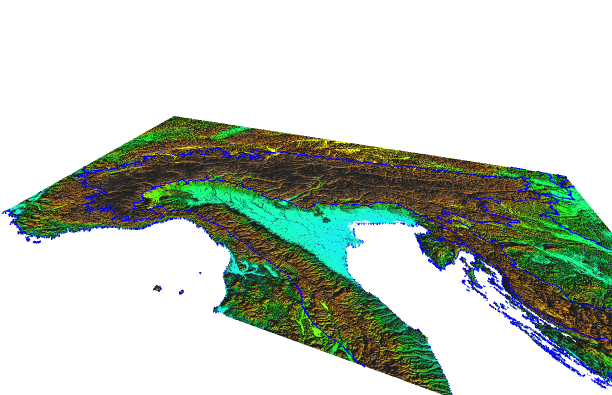In Austria, a discussion about the (in)completeness of the protected area network is ongoing [2].
Let's have a simple look at the network properties of the Austrian Natura 2000 protected areas done by GRASS GIS [3]
GIS data: SRTM [4], Natura 2000 data – the European network of protected sites - status end 2011 [5], European countries [6]
colored srtm:
r.colors map=srtemgar@gar color=srtm
extract centroid of Natura 2000 protected areas:
v.extract input=n2knewtwork output=n2knewtwork_centroid type=centroid
delaunay triangulation of centroids:
v.delaunay -l input=n2knewtwork_centroid output=n2knewtwork_centroid_delaunay
So some additions may indeed be necessary to include all habitats and species of European interest.
[1] EU 2013. Natura 2000 network. http://ec.europa.eu/environment/nature/natura2000/
[2] Umweltdachverband 2013. Zukunft Natura 2000 – Raus aus dem Schatten! Available at: http://www.umweltdachverband.at/service/veranstaltungsnachlese/jahrestagung-2013/
[3] GRASS GIS 2013. Version: 6.4.3svn, SVN Revision: 56757 Available at: http://grass.osgeo.org/
[4] CGIAR-CSI 2008. SRTM 90 m Digital Elevation Data. Available at: http://srtm.csi.cgiar.org/
[5] EEA 2012. Natura 2000 data – the European network of protected sites. European Environment Agency. Available at: http://www.eea.europa.eu/data-and-maps/data/ds_resolveuid/60860bd4-28d6-44aa-93c7-d9354a8205e3
[6] Eurostat 2013. Administrative units and Statistical units. Available at: http://epp.eurostat.ec.europa.eu/portal/page/portal/gisco_Geographical_information_maps/popups/references/administrative_units_statistical_units_1





